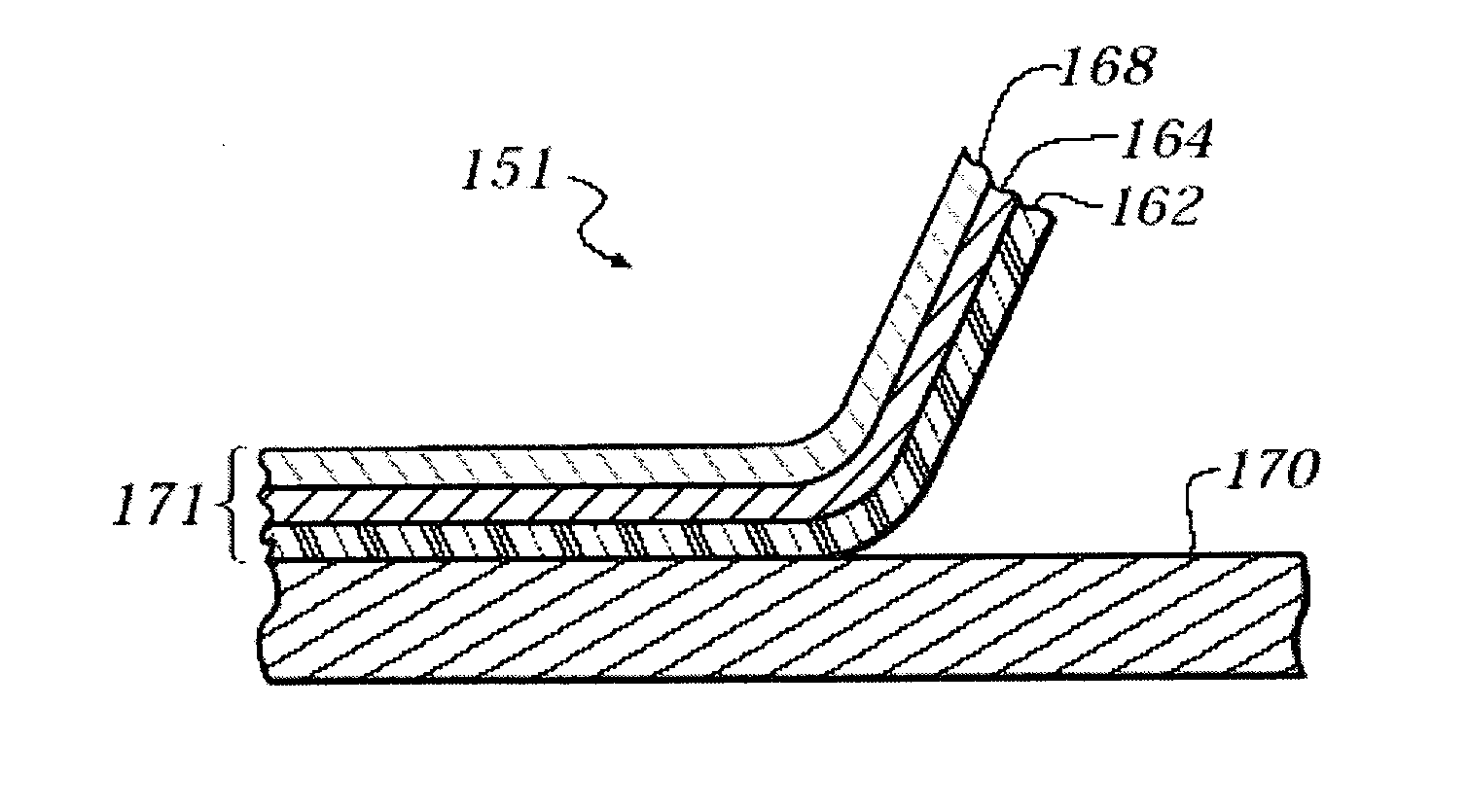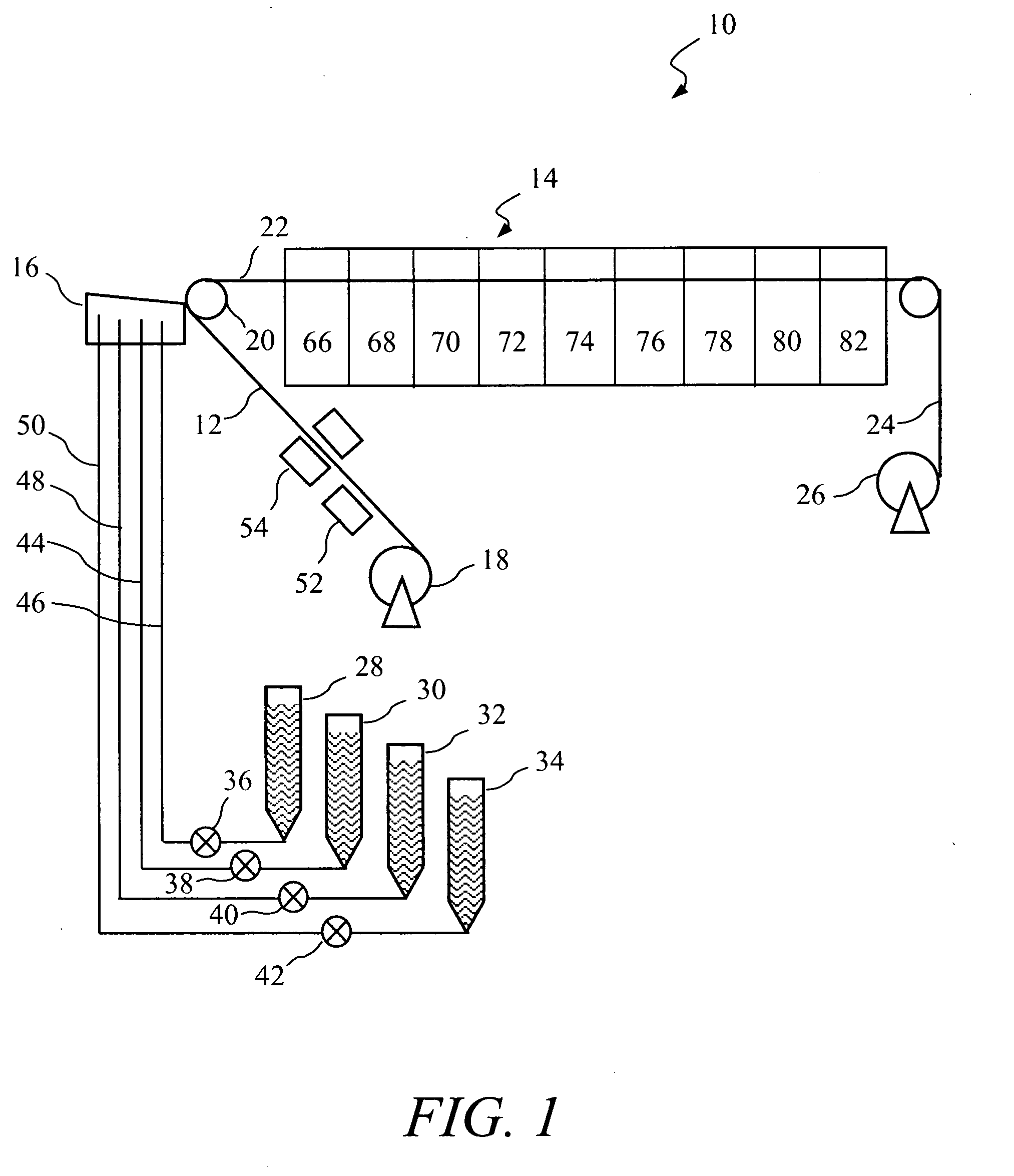Optical film composite having spatially controlled adhesive strength
a technology of optical film and adhesive strength, applied in the field of optical films, can solve the problems of reducing the application range of optical films, reducing the quality of optical films. , to achieve the effect of reducing the risk of premature delamination, improving handling and processing, and promoting adhesion
- Summary
- Abstract
- Description
- Claims
- Application Information
AI Technical Summary
Benefits of technology
Problems solved by technology
Method used
Image
Examples
example 2 (
Invention)
[0160] A second optical film composite was produced in a manner similar to Example 1 with the exception that the peelable layer was coated at a width of 1,283 mm. The corona discharge treatment applied across the full width of the peelable layer and temporary carrier substrate was 5.2 kJ / m2. As in the case of the optical film composite in Example 1, the width of the triacetyl cellulose optical film coating was 1,308 mm, thus creating an edge area in the case of Example 2 that was 12.5 mm wide on each lateral edge of the carrier substrate. These edge areas, taken together, constitute 1.8% of the area of the carrier substrate. The adhesive strength of the optical film to the carrier substrate in the center area of the optical film composite was found to be 0.6 N / m. The adhesive strength of the optical film to the carrier substrate in the edge area of the optical film composite was found to be greater than 20 times the adhesive strength in the center area.
[0161] The method u...
PUM
| Property | Measurement | Unit |
|---|---|---|
| length | aaaaa | aaaaa |
| thick | aaaaa | aaaaa |
| melting temperature | aaaaa | aaaaa |
Abstract
Description
Claims
Application Information
 Login to View More
Login to View More - R&D
- Intellectual Property
- Life Sciences
- Materials
- Tech Scout
- Unparalleled Data Quality
- Higher Quality Content
- 60% Fewer Hallucinations
Browse by: Latest US Patents, China's latest patents, Technical Efficacy Thesaurus, Application Domain, Technology Topic, Popular Technical Reports.
© 2025 PatSnap. All rights reserved.Legal|Privacy policy|Modern Slavery Act Transparency Statement|Sitemap|About US| Contact US: help@patsnap.com



